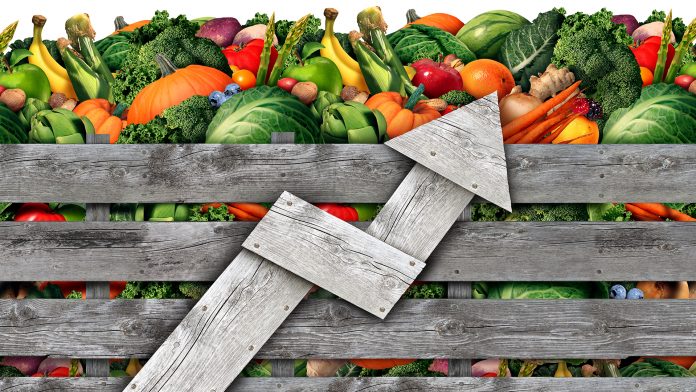The latest update from the World Bank has shown that global food price inflation poses food security risks to countries worldwide.
Food price inflation continues to plague economies globally, with rates higher than 5% reported in a significant portion of low-income, lower-middle-income, upper-middle-income, and high-income countries.
Real term data revealed that food price inflation surpasses overall inflation in a majority of the 165 countries where data is available (73%).
Recent price trends
Updates since December 14, 2023, indicate a 2% decrease in agricultural price indices and a 4% drop in cereal prices.
Notably, maize and wheat prices have declined, while rice prices have surged. Year-on-year figures reflect significant fluctuations, with maize and wheat prices lower and rice prices considerably higher.
The FAO Food Price Index for December 2023 recorded a decrease, primarily driven by drops in sugar and vegetable oil prices, despite increases in dairy and cereal prices.
Compared to December 2022, the index shows a notable decline, reflecting a broader trend observed throughout 2023.
World Bank insights and projections
Based on the October 2023 Commodity Markets Outlook, the World Bank highlights a consistent decline in food prices over the past three quarters.
Projections suggest a further decrease in 2024 and 2025, attributed to favourable crop conditions and reduced input costs.
Risks to food security
Various risks threaten the optimistic outlook, including potential escalations in conflicts, adverse weather phenomena like El Niño, and geopolitical tensions impacting trade policies and supply chains. Macroeconomic factors such as interest rate hikes and currency fluctuations also contribute to uncertainties.
The Integrated Food Security Phase Classification (IPC) paints a grim picture of acute food insecurity in the Gaza Strip, with catastrophic levels reported between November and December 2023.
Projections indicate a worsening crisis, with the entire population expected to face severe food insecurity, marking an unprecedented humanitarian emergency.
Following Russia’s invasion of Ukraine, trade-related policies have tightened globally, exacerbating food price inflation. Several countries have implemented export bans and restrictions in attempts to stabilise domestic markets, further straining international food supply chains.
How the World Bank is tackling food price inflation
In response to the crisis, the World Bank has intensified its efforts, surpassing its initial commitment by making $45bn available for food and nutrition security initiatives. This substantial funding aims to address immediate needs and bolster resilience against future crises.
As the world grapples with the persistent challenges of food insecurity and inflation, concerted efforts from international organisations, governments, and stakeholders are crucial to mitigate the impact on vulnerable populations and ensure sustainable food systems for the future.









